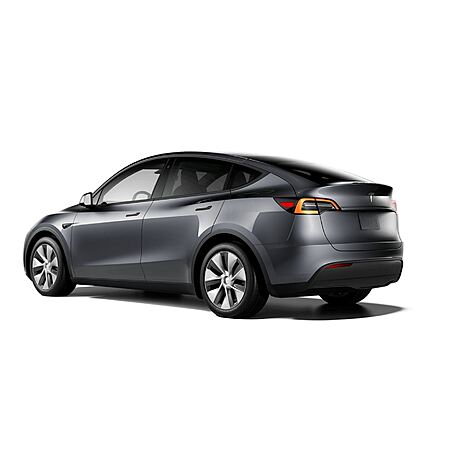https://www.tesla.com/modely/design#overview
Tesla Model Y
Dual Motor
All-Wheel Drive
Range: 330mi
Top Speed: 135 mph
0-60 mph: 4.8 seconds
Qualify for $7500 Federal Tax Credit with below income cap:
Adjusted Gross Income Limitations
$300,000 for married couples filing jointly
$225,000 for heads of households
$150,000 for all other filers
QA Note: List Price Drop
Rear-Wheel Drive is $43,990
Dual Motor AWD Long Range is $48,490 Now $48,990
Extra Discount for already built ones, change to your zip code and check
https://www.tesla.com/inventory/n...&range=100
Please use
the referral link [ts.la] when you purchase one. Thank you!




Leave a Comment
2,286 Comments
Sign up for a Slickdeals account to remove this ad.
Keep in mind you can literally plug into any wall outet and get line 2 mph. Takes forever but it's doable unless your commute is massive.
I have had a tesla since 2017, I've only paid for charging on road trips and at home. There are quite a few free chargers in my area (grocery, work, restaurant complex). I don't bother with any besides work now because they are packed. I'd download plug share and see what's available around you.
If you have to pay for a supercharger 1 time a week it's not awful - you can watch movies on the screen while you wait.
You are not going to save money vs hybrid, unless you have place to charge for free.
Supercharge are expensive at close to 0.5/kwh, cost point of view is more and close to gas.
I did some detail calculations when I got my Y.
Build quality is acceptable but not excellent compare to bbm.
You can use EITHER years income for the AGI cap (likewise in 2024 you can used 2024 or 2023s AGI)
This is true for 2023.
As of Jan 1 2024 it is not. At that point you can take the $7500 as a point-of-sale rebate and you get to keep all $7500 regardless of what your tax liability for the year ends up being. It could be $0 and you'd still get the $7500 and no clawback when you file taxes.
You ARE still subject to the max income cap though, and if you exceed that you'll get billed back the full $7500 when filing taxes.
So again you're making up an argument that's nonsensical and outright false.
(on top of that, if you mean a 240v charger, you're STILL factually wrong as there's nothing about being "detached" that is a requirement to do THAT either-- and I listed at least 2 OTHER ways NON owners can charge at 240 without installing anything but a switch on an existing plug- but again YOU are the one who is inventing the "must have 240" argument in the first place)
Unable to deal with the ACTUAL things I've said you just keep making up new ones I never did.
In fact I literally said the opposite of that
I'm starting you think a lot of your insults are simply projection.
You can charge 3-6 MPH depending if you have a 15 or 20 amp 120v socket.
Which would take roughly 6-12 hours to charge the average miles an american drives a day.
And said average american spend more hours at home than that\
Thus by the COMPLEX POWER OF BASIC MATH, 120v is sufficient for charging for their average daily use.
Like I've explained to you 10 times now.
(In fact even if you MEANT to use a different word, you spelled THAT wrong too)
You made that up and my reply was to point out people are home more than that number you made up
Which they are.
They're home MORE than that in fact.
Even PRE covid people averaged 50 percent of waking hours at home.
Post covid it's HIGHER.
Teslas can pull into a spot without you needing to be in the car
The fact you don't know this-- and STILL don't after having been told 3 times now is the best evidence yet you were never researching or considering buying a Tesla as you claimed.
It's not even that you're so obviously trolling here- it's that you're so bad at it.
I get out FIRST. Then close the door.
Then pull out my phone and direct the car to pull into the spot and park.
Done.
Reverse of same to get back in and leave.
Again Teslas have been able to do this since 2016
You were never actually looking into understanding or buying one my dude. Thanks for making it clear.
Wrong AGAIN
Unlike you, I keep having sources proving my facts.
https://flowingdata.com/2021/09/0...from-home/
So this is WAKING hours. The 8 hours you sleep is in addition to that. So FAR more than the 6-12.33 hours you'd need to get back the 37 miles of range an american drives on average each day.
You know- like I originally told you
Which it is.
You then strawmanned that into "the entire ownership cost is cheaper for everyone in all cases"
Again you're not even very good at this. Quoting my ACTUAL words to make it clear you're then inventing stuff not in them.
You then INVENTED A DIFFERENT claim I never made about the ENTIRE cost of every aspect of ownership and insisting I said it applied to everyone regardless of home charging. None of that actually happened though.
The whole "charge for 8 hours" thing you invented
Then I replied pointing out most people are home MORE than those 8 hours. Which they are. More than 12 on average in fact.
Which is just one example, you made lots more, some of which are also called out right in this very post.
naah, the problem is you can't keep what I actually said straight and keep inventing new things I never did.
Sign up for a Slickdeals account to remove this ad.
As an example, on my RAV4 hybrid, there is no starter, there is no front accessory belt, tensioner or idler pulleys to eventually wear out and need to be replaced. The transmission is not a classic hydraulic clutch based tranny with complex valve body and banks of solenoids controlling the shifts, nor is it a cheap belt and band type CVT as seen in many small ICE cars. Many Toyota hybrid's use a super simple gearbox that only uses the fluid in it for motor cooling and lubrication of the gears/bearings. The Toyota hybrid gearbox has proven to be immensely reliable even when used in taxi use for hundreds of thousands of miles. Heavy use of regenerative braking means my brake pads will last 2 - 3X as long as a standard ICE vehicle. This is clearly an EV benefit. I consistently get 45mpg and close to 500miles of range when stop-n-go driving in town, you'd be lucky to get 275 - 300mi range in a standard ICE RAV4 with the same driving conditions and same amount of gas. When I do need to hit the highway I can easily go 450 miles on 11 gal of gas and then stop and fill up in less than 5 min, just like any ICE vehicle. This last fact, no range anxiety and quick fill-ups, seems clearly to be the EXACT SAME benefit as an ICE vehicle. Do I still have to change the oil? Yes, but to eliminate range anxiety its a small quibble for me?
Another perk,
The battery in our HEV weighs < 100lbs and is easily accessible under the rear seat. This means that after the 10yr/150k mile battery warranty has expired and when the battery eventually fails, it can easily be pulled at home and repaired by me. There are phone apps that when coupled with a bluetooth OBD adapter will show you which cells are weak so they can be pulled and replaced. Do a search on YouTube for Prius battery repair to see what I'm speaking of. Compare this to a standard EV with a 50KWH or larger battery pack which will require a vehicle lift and some sort of special lift to lower the 1 ton+ battery pack from the vehicle. The massive pack in a common EV is in no way serviceable by the common end user.
The best part of the ICE - EV marriage in our hybrid is that the hybrid RAV4 is a full second faster 0 - 60 than the regular ICE RAV4. I compare it in power to our V6 SUV, it in no way feels like a 4 banger. In fact if you went and drove both at the dealership you'd think that the regular ICE only version is a dog. The hybrid walks all over the standard ICE version.
All of these benefits for only a $1500 cost difference (when I bought it the difference was < $1200) over the same AWD model ICE only RAV4. I'd have paid that for the extra power alone.... The extra 15 - 17mpg is icing on the cake.
Battery range? We shall see. All cars deteriorate in one way or another, and we know that EV's need far less maintenance than gas engine cars. The brake pads last 3x longer, no oil changes, no alternator, no belts, on and on. Everything eventually breaks and everything can break prematurely. I'm not a fan of Tesla's repair policies at all, but EV is generally much more reliable than gas vehicle.
Sign up for a Slickdeals account to remove this ad.
You'll sure show him buying a slower, worse handling, higher TCO, less efficient car!
The $7500 is likely to be reduced to $3750 for some trims of some models.
Most likely the ones using cells from China (which tend to be the shorter range/RWD models-- though I think the LR AWD 3 is currently using chinese 2170s in recent months too- but it's possible they switch back to US ones on Jan 1 for that reason- they can't switch to US LFP cells for the RWD models as there are no US made LFP cells to use).
For the models still using cells from the US or Japan (the S, X, performance trims of 3/Y, and AWD Y currently as far as I know- plus Cybertruck which will use US made cells) it'd remain $7500 so long as the vehicle you're buying is under the price cap for its class (55k for sedans so no S, 80k for SUVs and trucks)
It's possible it remains $7500 for at least SOME others as well, but that's unknown at this time.
Anyway, apart from that, yes you'd get $7500 at time of purchase as of Jan 1-- (or $3750 if you buy a trim that only qualifies for $3750) meaning your car loan (if taking one) would be lower... Note this does NOT change the [B]purchase price[/B so you'd still pay sales tax on the original price (and registration fees, etc based on original price). Additionally as of Jan 1 you'd no longer need a tax burden equal to the credit to get all of it- tax burden becomes irrelevant.
The max income cap is still in place though- and if you take the up front credit but your income for 2024 (and 23) exceeds the cap you'll owe the full amount back to the IRS (plus possible penalties) when you file your 24 tax year return.
Leave a Comment